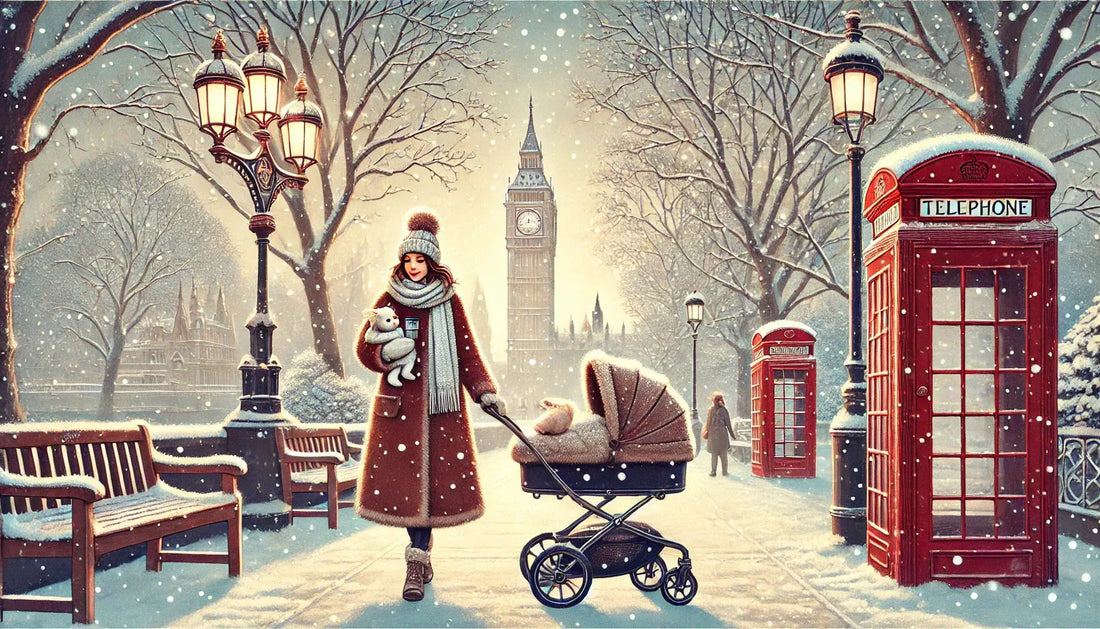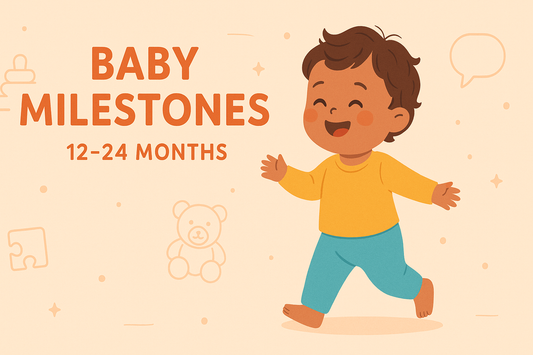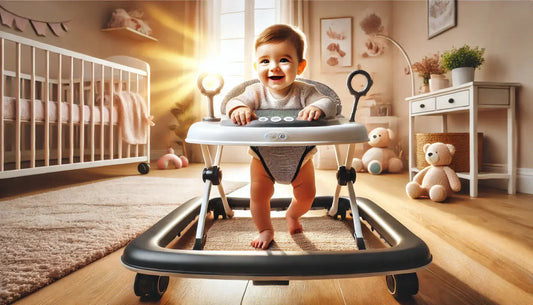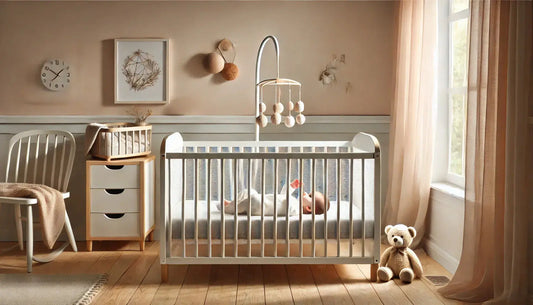
Winter Safety 101: How to Keep Your Baby Warm & Protected in the UK
Share
In the UK, winter temperatures can plunge well below 0°C—often accompanied by damp conditions or biting winds that chill you to the bone. At Baby Bumpers, we want you to embrace the magic of frosty mornings and occasional snow flurries without compromising your child’s comfort or safety. Drawing on paediatric advice and NHS recommendations, we’ve compiled this essential winter guide to keep your little one snug, safe, and ready for seasonal fun. We’ve also included tips relevant to families in other wintry parts of the world.
1. Why Babies and Toddlers Are More Vulnerable in Cold Weather
Babies and toddlers have unique needs when braving the cold:
- Less insulating body fat: Young children have less subcutaneous fat, so they lose heat faster and have more difficulty staying warm.
- Proportionally larger heads: A baby’s head makes up a bigger part of their body surface area, increasing heat loss if it’s not well covered.
- Inefficient shivering: Shivering helps the body generate warmth, but babies and toddlers aren’t as effective at this as adults.
Because of these factors, little ones are more prone to hypothermia and frostbite when temperatures drop—so planning ahead is key.
2. How Cold Is Too Cold?
In British winters, it’s common to see the thermometer dip below freezing (0°C / 32°F). Here’s a quick guide:
- Around 0°C (32°F): Short outings can be fine if your baby is well dressed and you keep an eye on them for signs of discomfort (red cheeks, fussiness, or cold hands and feet).
- Below -6°C (20°F): At these extremes, limit outdoor exposure to a few minutes at a time. Strong winds can make it feel even colder—always check the wind chill factor on the Met Office website or local weather apps.
Remember: Hypothermia can occur even at temperatures as high as 4-5°C (40°F) if clothes get wet and your child stays damp for too long.
3. Dressing Your Baby for Cold Weather: Layering Up
The best way to keep your baby or toddler warm is to dress them in layers:
- Base Layer: Choose soft, breathable clothing (like cotton or bamboo) that sits close to the skin.
- Middle Layer: Add insulating fabric such as fleece or wool.
- Outer Layer: A water-resistant coat or snowsuit to shield against wind, rain, or snow.
Essential Accessories:
- Hat: Babies lose heat rapidly through their head, so a snug hat is crucial.
- Mittens: Keep little fingers toasty. Look for waterproof mitts if you’re planning snow play.
- Boots: Choose sturdy, warm boots—especially if your toddler is walking.
- Neck Warmers, Not Scarves: Scarves can be a choking hazard; a children’s neck warmer is safer.
- Blankets: If your baby is in a pram, use a thick, tightly woven blanket or footmuff for extra insulation.
Tip for Other Cold Climates: In countries with heavy snowfall, ensure your baby’s outerwear is also moisture-wicking to keep them dry.
4. Pram vs Car Seat: Winter Safety on the Go
In the Pram:
- Rain Cover: UK weather is famously unpredictable, so a rain cover is a must. It also helps keep out chilly winds.
- Extra Layer: If you’re popping out for a brief walk, tuck a light blanket around your baby’s legs or feet or use a BabyBumpers footmuff for extra comfort.
In the Car:
-
Avoid Bulky Coats: When using a car seat, big puffy coats can create gaps under the harness, reducing its effectiveness. Instead:
- Dress your baby in a lighter, fitted jacket or fleece.
- Once they’re strapped in, you can place a warm blanket over them.
- Emergency Kit: Keep a spare coat or a foil “space” blanket in the boot. If you break down in cold weather, you’ll have a backup to keep your child warm.
5. Spotting the Signs: Frostbite and Hypothermia
Frostbite
- What Is It? Frostbite occurs when skin and underlying tissue freeze, typically affecting fingers, toes, noses, and ears.
- Signs to Watch For: The skin may look white, grey, or waxy, and can feel prickly, burn, or go numb.
If You Suspect Frostbite:
- Move your child indoors immediately.
- Gently warm the frostbitten area in lukewarm (not hot) water. Do not rub the skin or use direct heat sources (like radiators).
- Offer a warm (not scalding) drink.
- Contact your GP or ring NHS 111 for medical guidance.
Hypothermia
- What Is It? Hypothermia happens when the body’s core temperature drops below 35°C (95°F). In children, it can set in faster than in adults.
- Signs to Watch For: Intense shivering, drowsiness, clumsiness, lethargy, confusion, or a weak pulse.
If You Suspect Hypothermia:
- Call 999 immediately.
- Remove any wet clothing.
- Wrap your baby in warm blankets, ensuring the head and core are well covered. Wind-resistant layers help if you’re outdoors.
- Use your own body heat to help warm your child.
- If they stop breathing, begin CPR or mouth-to-mouth resuscitation until help arrives.
6. Winter Sleep Safety at Home
Room Temperature: The NHS advises keeping your baby’s sleeping area between 16°C and 20°C. If it feels chilly to you, consider a layer of cotton sleepsuit plus a light sleeping bag for your baby.
- Avoid Overheating: Too many heavy blankets or a hot room can increase the risk of SIDS. Check if your baby is overheating by feeling their chest or back of the neck for sweat.
- Safe Cot Setup: Keep loose blankets and large toys out of the cot. If you’re using bumpers, make sure they’re breathable, secure, and follow current safety guidelines.
(Parents in colder regions like Canada or Northern Europe: central heating or reliable space heaters can help maintain a steady temperature. Just ensure they’re used safely and out of your child’s reach.)
7. How Baby Bumpers Can Help
At Baby Bumpers, we understand the importance of keeping your little one warm and snug wherever you go:
- Ultimate Warmth: Our footmuffs provide a cozy cocoon of warmth, perfect for chilly walks or frosty days.
- Snug and Secure Fit: Designed to fit most prams and strollers, they keep wriggly little feet safely tucked in.
- Stylish and Practical: With designs tailored for the UK’s unpredictable seasons, our footmuffs blend function with fashion, keeping your baby comfortable all year round.
Perfect for every outing, our footmuffs are your go-to solution for keeping your baby cozy on the move!
8. Winter Well-Being for Parents and Babies
- Stay Active Indoors: If it’s too cold for pram walks, try interactive indoor play or baby yoga sessions.
- Check Met Office Warnings: In the UK, weather can change rapidly. Stay updated on cold weather alerts and prepare accordingly.
- Plan Your Days: On very cold or icy mornings, run errands later in the day when temperatures might be slightly higher.
- Keep Contact Numbers Handy: If you’re worried about your baby’s health, ring NHS 111 (or your local health line if you live elsewhere) for advice.
9. Final Thoughts
Winter in the UK can be enchanting, with frosty landscapes and the excitement of the festive season. By layering your baby, being mindful of hypothermia and frostbite, and ensuring a snug sleep environment, you can enjoy the cold months with confidence. Whether you’re in Edinburgh, London, Cardiff, or beyond, Baby Bumpers has you covered for peace of mind all winter long—and if you’re reading this from another chilly country, these tips will help you keep your baby safe and warm, too.
Stay cosy, stay safe, and enjoy the winter wonder with your little one!
Additional Tips for Extra-Cold Climates
- Snowy Regions: Choose waterproof outerwear and ensure you have a sturdy pushchair or sled if you venture out.
- Rural Areas: Keep a well-stocked emergency kit in the car (blankets, baby supplies, first-aid items) in case of breakdowns or road closures.
- Frequent Travellers: If you’re travelling between countries with different climates, pack versatile layers and check local guidelines on car seats and winter safety.
For more expert winter care tips and premium-quality bumpers, explore our collection at Baby Bumpers. We’re here to help you and your little one revel in winter’s beauty—without any chills or worries.



